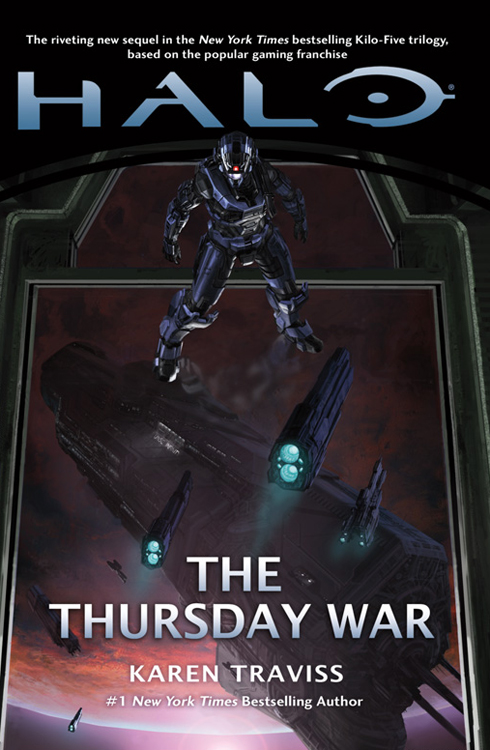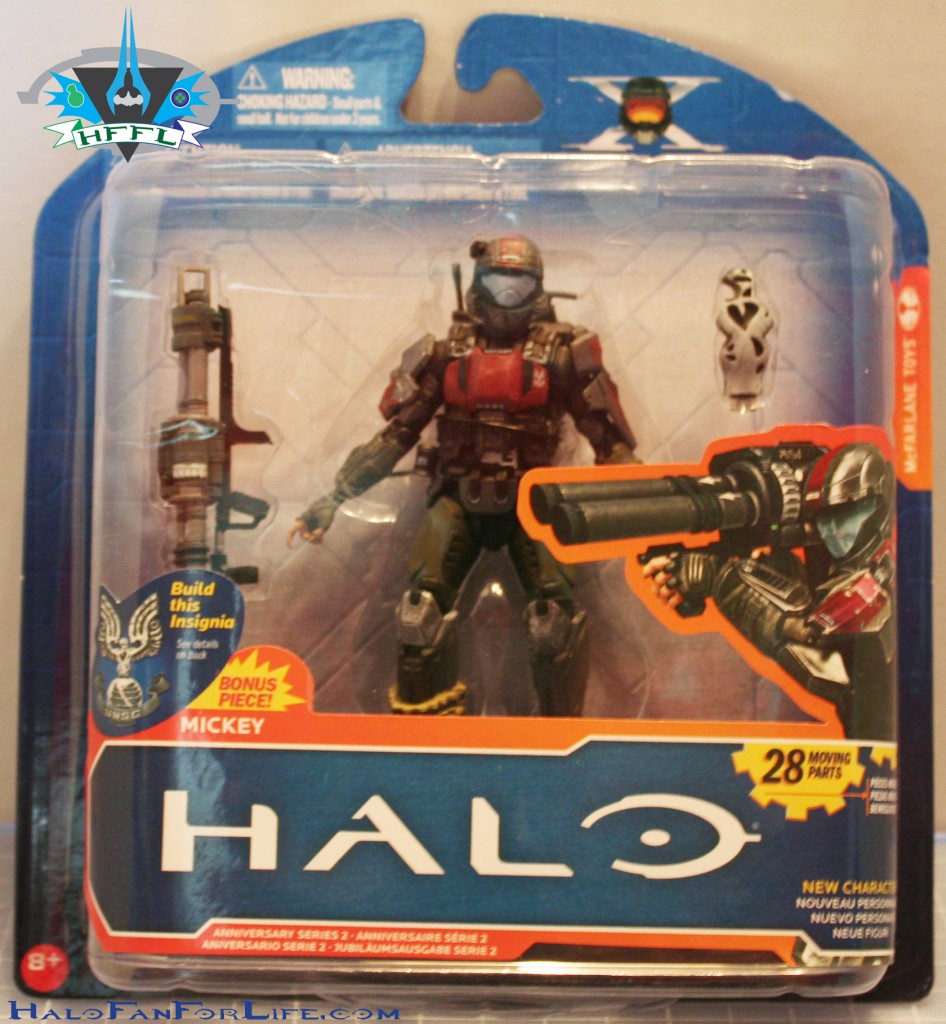Article reposted from: http://www.wired.com/gamelife/2012/04/halo-movie-generation-xbox/
The Master Chiefs left the offices of Creative Artists Agency around midday on June 6, 2005 in a fleet of limo vans. In their green, red and blue Spartan armour the cybernetically-enhanced super soldiers made quite a spectacle. Each stood six-foot-three tall, visored helmets obscuring their faces. Each carried a red bound document folder stamped with the CAA logo that contained two things: a copy of the Haloscreenplay commissioned by Microsoft and written by Alex Garland and a terms sheet. None of them spoke a word.
The security guards on the gates of the major motion picture studios are used to seeing many things. Still, a hulking soldier from the future striding towards them and demanding access to the studio’s top brass was inevitably going to end in some kind of shooting incident — whether involving a United Nations Space Command BR55 Battle Rifle or a security guard’s arguably more deadly .38 revolver.
Fortunately Larry Shapiro’s team at CAA had called ahead and warned the studios’ security heads what was going on. The Master Chiefs were allowed onto the lots at Universal, Fox, New Line, DreamWorks and others without firing a single shot. If this was the videogame industry literally invading Hollywood, it was remarkably bloodless. They delivered their scripts and waited outside the meetings rooms in silent character, flicking through the pages of Variety. Everyone knew the clock was ticking: Studio executives only had a couple of hours to read the Halo screenplay and decide whether or not to make an offer before the Master Chiefs returned to CAA with the screenplay. It was the deal of the century, and a fantastic piece of showmanship.
The Master Chief suits were Shapiro’s idea and they ensured that the Halo deal made headlines even before the trade papers learned how rich the demands were. It was a spectacular attempt to turn Microsoft’s first foray into Hollywood filmmaking into a theatrical event and it very almost worked. Master Chief, the hero of Microsoft and Bungie’s bestselling Halo games, made his debut in Hollywood. Sadly, though, his Tinsel Town ascension was short-lived.
Microsoft was aggressive in pursuing the idea of taking Halo to the big screen. It’s easy to understand why. The games, developed by Bungie Studios, were perfect blockbuster material: high-octane, intense sci-fi shoot ‘em ups with a dense mythology and storyline and a dedicated fan-base of millions. Combined sales of the first two Halo games grossed in excess of $600 million over four years, selling north of 13 million units. The movie biz looked on in envy.
When Microsoft approached CAA about their movie ambitions, Shapiro told them about the Day After Tomorrow auction set up by CAA agent Michael Wimer and director Roland Emmerich. With a script for the apocalyptic eco-movie in hand, Wimer called the major studios and invited them to bid for it. The process was unusual: Every studio would send a messenger to CAA at an allotted time, pick up the script and then have 24 hours to read it and make an offer. Each script was despatched with a terms sheet: Here’s how much we want; here’s how much we want for the director, and it has to be a “go” movie (in other words, a picture with a guaranteed start date for production). Each studio responded by trying to negotiate terms. The only exception was Fox, who simply wrote on the term sheet: “Yes”.
Microsoft, unaccustomed to Hollywood’s culture, was impressed by that story. It wanted to be able to dictate the terms even though it was a newcomer in the movie biz. Halo was its prize property and they wanted to protect it.
Microsoft also wanted to make a bundle of money from its sale. For Shapiro, it was typical of the gulf between the two industries. Games creators are, by their nature, engineers who deal in absolutes. For them the subtleties of Hollywood production, with its ebb-and-flow of egos and power plays, were often alien. “To sell a movie into a studio and actually get it made is a lot of work,” he says. “It takes a lot of conversations and a lot of pixie dust being thrown about while you’re getting the deals done. In the games industry, they’re technologists and they’re data driven. They’re looking at data points and saying: ‘We need the movie to be made, it’s got to be this, this and this. If you get A, B and C to be part of the movie, then great we’ll sell you the rights.’ You can’t do that.” But, if that’s what Microsoft wanted, CAA was willing to try.
To set up that kind of deal, Microsoft needed to be ready. Most importantly it needed to have a screenplay so it paid Alex Garland (28 Days Later, The Beach) $1 million to pen a spec script. The screenplay was supervised by Microsoft, which meant it was — for good or ill — heavily steeped in the games’ mythology. Still, the project now had a blockbuster screenwriter and was based on a high-profile videogame franchise.
Next, it was a case of setting up the auction. Peter Schlessel, the former president of production at Columbia Pictures, was one of the main negotiators in the Halo movie deal and served as Microsoft’s Hollywood liaison. Together with Microsoft and its lawyers, Schlessel and the CAA team hammered out a term sheet. “We were literally setting out to be the richest, most lucrative rights deal in history in Hollywood,” says Shapiro. “You have to remember that no property, not even Harry Potter, was getting [what we were asking for].” Microsoft, a global software giant used to getting its own way, wasn’t about to kowtow to Hollywood. It knew Halo was the jewel of videogame movies, the one that could be a true blockbuster hit. According to Variety, Microsoft wanted $10 million against 15% of the box office gross, in addition to a $75 million “below-the-line” budget and fast-tracked production.
Those were big demands. Not least of all since, at the time, videogame movies were still floundering on the edge of respectability. Tomb Raider had made a pot of money and pushed towards the mainstream but its 2003 sequel, Lara Croft: Tomb Raider — The Cradle of Life, suffered a disappointing opening weekend at the U.S. box office and limped by on its foreign grosses. The Lara Croft franchise was running out of steam early. And most other videogame movie outings weren’t even in the same neighbourhood as Lara. Paul W. S. Anderson, the director of Mortal Kombat, parlayed his success into the zombie-themed Resident Evil franchise distributed by Sony Screen Gems. The first movie based on Capcom’s survival horror game series took $102 million worldwide and did gangbuster business on DVD selling over a million units. But it lacked the prestige and mainstream crossover potential of Tomb Raider.
Microsoft were aiming higher — much, much higher. CAA’s deal-making matched the software giant’s aspirations. According to the New York Times, Microsoft were demanding creative approval over director and cast, plus 60 first-class plane tickets for Microsoft personnel and their guests to attend the premiere. It wouldn’t be putting any money into the production itself beyond the fee paid to Garland, nor was it willing to sign over the merchandising rights. To add insult to injury, Microsoft wanted the winning studio to pay to fly one of its representatives from Seattle to LA. They would watch every cut of the movie during post-production. Clearly, Microsoft was entering into negotiations brandishing a very big stick.
With the screenplay written and the ink still drying on the terms sheet, the agents called up the major studios and advised them to be prepared. It was a bold, some might say arrogant, show of power. As Shapiro remembers it, “We told them: ‘You need to have all your decision makers in a room because we’re going to deliver the script for you to read together with a terms sheet. But there’s a fuse on it. You’ll only have a certain amount of time to make a deal.’”

Master Chief in the upcoming game
Halo 4.
Image: Microsoft
Because Hollywood is a town built on relationships, CAA’s agents made sure they called all the major players. Even then there were some who felt snubbed; Miramax head honcho Harvey Weinstein called up to shout about being left off the list. Everyone had assumed Miramax wouldn’t be interested in the property. Truth was they probably weren’t, but there was prestige to be had in being invited to the Haloparty. The only major studio Microsoft refused to approach was Columbia, which was owned by Sony, its chief rival in the console war.
With his production background, Shapiro decided to add a little razzle dazzle to the proceedings. Remembering the Master Chief costumes he’d seen at Comic-Con, he tracked down the one person in the U.S. who was fabricating the game’s official Spartan UNSC battle armour and hired seven suits: a Red, a Blue and several in Master Chief green. “I had them shipped out to CAA,” recalls Shapiro, “they came in crates and had instructions about how to put them on. I hired character actors to wear the suits because, you know, you don’t just put anyone in these suits. They had to feel like Master Chief.”
For a few hours on June 6, 2005, Hollywood became Halowood. Everyone was buzzing about the Master Chiefs spotted walking through the studio lots and — more importantly — about the richness of the deal Microsoft was demanding. No one had ever seen anything like it before. Microsoft, the global corporation whose products sat on every desktop, had come to Hollywood and wasn’t afraid of throwing its weight around. “If showmanship and arrogance and Hollywood don’t go together, I don’t know what does,” says Moore who was Microsoft’s go-between with Universal during the negotiations, reporting to the software company’s point man Steve Schreck.
Not everyone was impressed. Movie executive Alex Young, who by the time of Halo had moved from Paramount to Fox, recalls reading the screenplay under Master Chief’s watchful eye. “It was one of those gimmicky Hollywood things: hey, force everybody to be in a room, make it feel urgent, have a guy show up in costume and ‘Oh my God! This feels like a big deal’. It probably served Microsoft and CAA well at the time, but ultimately it seemed like a bit of manufactured theatre to me.”
Another problem was that the Halo property was so well-known by that point that everyone knew what to expect. “You either loved the idea of making a Halo movie or you did not,” suggests Young. Having a guy in costume deliver the screenplay wasn’t going to convince you one way or the other.
In the end, though, it wasn’t the Master Chiefs’ fault that the deal stumbled. Nor was it CAA’s. The failure of the Halo movie remains a potent illustration of the gulf that still lies between Hollywood and the videogame business. It should have been the tent-pole movie to die for, instead it became the one that got away. Millions of Halo fans around the world wanted a movie, yet it failed to launch. Partly, it stemmed from the on-going inability of both sides of the deal to understand each other’s culture, needs and language.
Most of the studios who read the Halo screenplay passed immediately. Microsoft’s terms were simply too demanding. By the end of Master Chief Monday there were only two horses in the race: Fox and Universal. Microsoft hoped to use each to leverage off the other but hadn’t banked on the studios’ very different approach to doing business. “What the games industry doesn’t understand is that this town is all about lunch,” explains Shapiro. “It doesn’t happen like that in the games industry. If there was a movie studio going out to the games publishers to license Avataror something like that, they’d say ‘Ok we’re licensing Avatar, send us your best deal. But none of the games publishers would talk to each other and say ‘Hey, what are you going to offer them?’”
The studios weren’t so reticent in sounding each other out. “What happened was Universal called Fox and asked them what they were going to offer,” continues Shapiro, who watched events unfold close-up. “They decided to partner on it. ‘Let’s offer the same deal and offer to partner’. So now we lost our leverage.” Universal agreed to take U.S. domestic, Fox would take foreign. In the blink of an eye Microsoft’s bargaining position had been pole-axed.
The immensely powerful Microsoft had wandered into the deal naïvely expecting everyone to play by its rules and the resulting culture shock put immense strain on the Halo deal. For Moore, then corporate vice-president of the Interactive Entertainment Business division at Microsoft, there was clearly culture clash during the negotiations: “You work for a company like Microsoft, where you do what you say, you say what you do; you think you have an agreement, you’re ready to go, and then… [the deal falls apart].”
It was something that talent agents working at the intersection between the two industries have experienced many times. “When the videogame industry talks to people they do it open-kimono and they expect the same transparency back,” says Blindlight’s Lev Chapelsky. “Hollywood doesn’t function that way, they dance and they sing and they play games and go through their ritual haggling. To somebody who’s not accustomed to that, it can be insulting.”
Microsoft clearly weren’t accustomed to it. They were used to being the strongest contender in any negotiation they entered into. But this time they were far out of their comfort zone. “We don’t understand Hollywood,” Microsoft Games Studios general manager Stuart Mulder confessed to the trade papers in 2002 as the company inked in its deal with Shapiro at CAA. It was a throwaway comment that would turn out to be disturbingly prophetic.
What was apparent during the Halo deal-making was that Microsoft was far from home, perhaps even surrounded in enemy territory. In the middle of the Halo negotiations, as all parties sat around the table, Shapiro recalls the discussion between Microsoft’s Hollywood liaison Peter Schlessel and Jimmy Horowitz, Universal’s co-president of production, taking an aggressive turn. “Schlessel was getting really tough on some of the terms with Horowitz: ‘Come on, don’t be a jerk, blah, blah, blah…’. It was getting really heated. The guy from Microsoft [Steve Schrek] was like, ‘Wow, this is really good.’ Then we took a break and Schlessel goes to Horowitz, ‘Are you coming over for Passover?’ Because they know each other. You don’t have those kinds of relationships in videogames. In Hollywood you can be getting at each other but then you’re playing golf together the next day.”
Even after the deal was struck, the misunderstanding over how the movie business operated continued to be a problem. Microsoft wanted a big-name director, but Peter Jackson, helmer on The Lord of the Rings trilogy, decided to sign on as a co-producer alongside Peter Schlessel, Mary Parent and Scott Stuber. Jackson wanted his new protégé, an up-and-coming commercials whiz kid called Neill Blomkamp, to direct. With Jackson’s fee running to several million dollars the studios knew there was an advantage in hiring a cheaper, less well-known talent to sit in the director’s chair. Microsoft was reputedly not happy with the decision.
Blomkamp, a South African director who had made his mark with commercials for Nike and had shot an intriguing short about alien apartheid called Alive in Joburg, was concerned about getting chewed up and spat out while making his first feature with these three enormous corporations and a budget north of $100 million. “My instinct was that if I crawled into that hornet’s nest it would be not good, and it was a clusterfuck from day one,” he admits. “There’s no question that there was a clash of worlds, for sure. The two sides weren’t seeing eye-to-eye.”
What lured him in, beyond the obvious kudos, was his love for the property: “I told Tom Rothman [co-Chairman of Fox Filmed Entertainment] that I was genetically created to direct Halo.” However, Blomkamp quickly realised that the studio didn’t share his artistic vision and was uncomfortable at the prospect of his gritty, post-cyberpunk aesthetic — all blurry video feeds and radio chatter – dominating a summer blockbuster. “Rothman hated me, I think he would have gotten rid of me if he could have,” says the director. “The suits weren’t happy with the direction I was going. Thing was, though, I’d played Haloand I play videogames. I’m that generation more than they are and I know that my version of Halo would have been insanely cool. It was more fresh and potentially could have made more money than just a generic, boring film — something like G.I. Joe or some crap like that, that Hollywood produces.”
Blomkamp’s relationship with Fox was particularly fraught. The way the deal was split between three major corporations and a handful of Hollywood producers caused several unusual imbalances in terms of power. “The way Fox dealt with me was not cool. Right from the beginning, when Mary [Parent, Universal’s former president of production turned Halo producer] hired me up until the end when it collapsed, they treated me like shit; they were just a crappy studio. I’ll never ever work with Fox ever again because of what happened to Halo – unless they pay me some ungodly amount of money and I have absolute fucking control.”
He was also being pressured by Microsoft’s demands too. One of the biggest issues was creative control. Microsoft had paid Garland to pen the screenplay to their specifications in order to retain control over what was clearly a very valuable property to them. Halo was an Xbox exclusive title, a billion-dollar franchise, and its chief weapon in the console war against Sony. The problem was, though, that filmmaking was a collaborative exercise and total control simply wasn’t possible.
“If you’re dealing with a company that doesn’t understand the film industry, its sense of assurance comes with glossy names that have done a lot of big projects that have made a lot of money,” says Blomkamp. “I think the guys at Bungie liked what I was doing. I’m fairly confident in saying they liked where I was going. It’s highly possible that that artwork was getting back to Microsoft and Microsoft itself, the corporate entity, was not happy with it because it was too unconventional. I don’t know if that’s true or not, but it was entirely possible.”
Against this fraught background, Universal funded $12 million of preliminary development on the movie. Some of the money was spent before Blomkamp came on-board by director Guillermo Del Toro, who was initially attached before going off to make Hellboy II: The Golden Army instead. The rest was spent on Blomkamp’s watch and included paying various screenwriters — Scott Frank, D.B. Weiss, Josh Olson — to redraft the original screenplay.
Meanwhile, Weta Workshop, the New Zealand physical effects company co-founded by Jackson, was fabricating real-life versions of the weapons, power armour and the Warthog assault vehicle from the game. Blomkamp would eventually use them to shoot a series of thrilling test shorts. “The legacy of a movie never made,” is how Moore describes the collected footage, which was later cut together under the title Halo: Landfall and used to promote the Halo 3 videogame release in 2007.
With development proving slow, Fox and Universal were beginning to get impatient. The gross heavy deal and costs increased the growing sense of unease. In October 2006, right before a payment was due to be made to the filmmakers and Microsoft, Universal demanded that the producers’ deals be cut. Jackson consulted with his co-producers and Blomkamp, as well as with Microsoft and Bungie, and refused. In a stroke, the Halo movie was pronounced dead in the water.
What ultimately killed the Halo movie was money. “Microsoft’s unwillingness to reduce their deal killed the deal,” says Shapiro. “Their unwillingness to reduce their gross in the deal meant it got too top-heavy. That movie could have been Avatar.”
Blomkamp agrees: “One of the complicating factors with Halo was that Microsoft wasn’t the normal party that you’d go off and option the IP from and make your product. Because Microsoft is such an omnipresent, powerful corporation, they weren’t just going to sit back and not take a massive cut of the profits. When you have a corporation that potent and that large taking a percentage of the profits, then you’ve got Peter Jackson taking a percentage of the profits and you start adding all of that stuff up, mixed with the fact that you have two studios sharing the profits, suddenly the return on the investment starts to decline so that it becomes not worth making. Ultimately, that’s essentially what killed the film.”
—End Article
Wow, lots of very insightful stuff there. I still hope there is a movie to come, but as time goes on and with these developments, it just gets harder and harder to get done. We can only hope that Halo 4 is a massive success. Enough that it will make movie studios perk up and take a chance on the franchise in movie form.
-HFFL



















